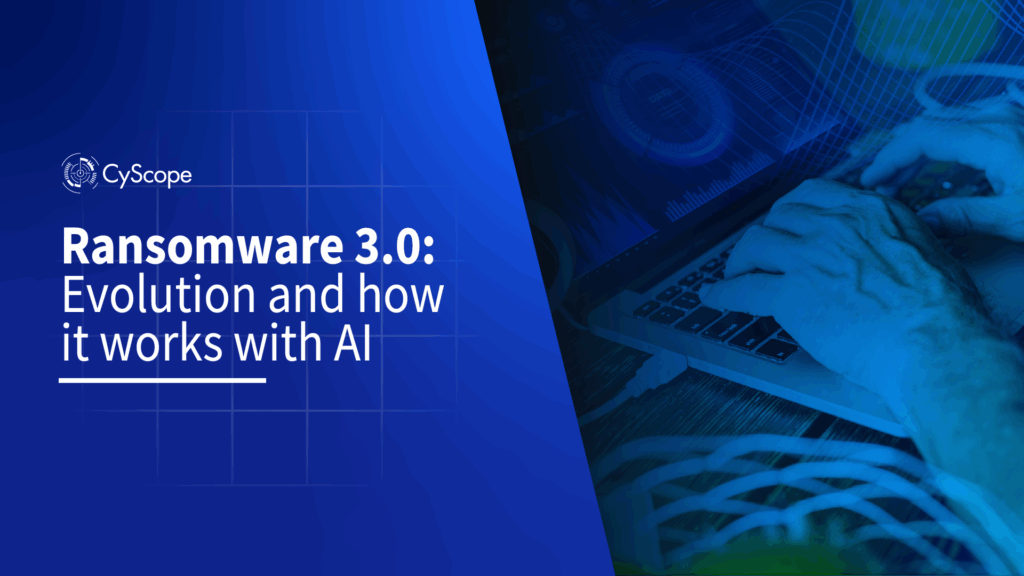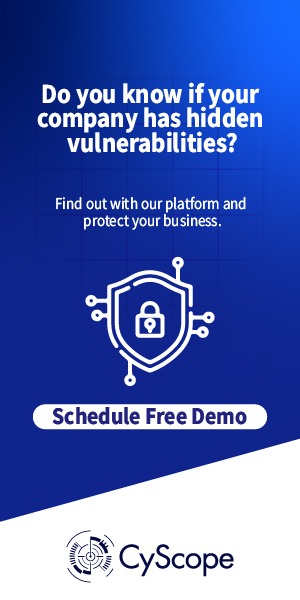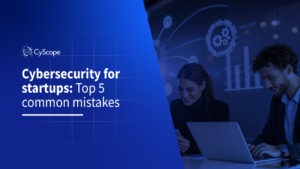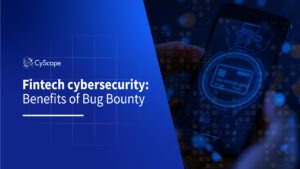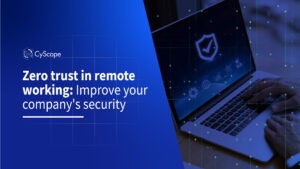Imagine an attacker encrypting your data and trading with you in real time using deepfakes of your CEO, threatening to leak sensitive information on social networks if you don’t pay up, and evading your defenses by learning from every failed detection attempt. This is not science fiction: it is ransomware 3.0, the most dangerous evolution of cybercrime, powered by artificial intelligence. In 2024, these attacks increased by 87% (IBM X-Force), and the average ransom is over $5 million.
In this article, we’ll walk you through how this threat operates, why it’s so effective, and how CyScope’s offensive security platform, backed by more than 450 ethical hackers, can anticipate its tactics.
What is ransomware 3.0, and why is it so dangerous?
Ransomware 3.0 goes beyond traditional encryption. It is a threat ecosystem that combines:
- Triple extortion: Encrypts data + steals information + threatens DDoS attacks or doxing (leaking data to customers/competitors).
- Automation with AI: Uses machine learning to:
- Identify critical vulnerabilities in hours.
- Generate hyper-personalized phishing emails.
- Mimic executive voices or faces (deepfakes) in fraudulent calls.
- Accelerated lateral movement: Spreads across networks 3x faster than traditional ransomware (CrowdStrike, 2024).
3 key tactics of Ransomware 3.0 (and how CyScope neutralizes them)
1. Targeted attacks with automated reconnaissance
- How it acts: Scans public networks (LinkedIn, GitHub) to identify key employees, then uses AI to create convincing spear-phishing.
- Our defense: On-demand pentests to evaluate the different security controls implemented by the organization. This allows us to identify vulnerabilities that would enable ransomware injection.
2. Smart encryption + data leakage
- How does it work? Steals data before encrypting systems, using AI to classify valuable information (contracts, intellectual property).
- Our defense: Bug Bounty Programs that look for gaps in storage, cloud, or APIs. Our community of 450+ experts detects leaks that automated tools miss.
3. Dynamic evasion of defenses
- How does it work? AI analyzes your security systems (EDR, firewalls) and generates malware variants in real-time to evade detection.
- Our defense: Continuous testing that replicates techniques from groups like LockBit 3.0 or BlackCat. We identify blind spots in your defenses before attackers do.
Why do traditional solutions fail in the face of Ransomware 3.0?
- Antivirus/EDR: They do not detect AI-generated malware that they have never seen.
- Backups: Are useless if attackers steal data and threaten to leak it.
- Awareness: Voice deepfakes fool even trained employees.
The solution: A proactive and humane approach, where ethical hackers use the same tactics as criminals but to protect you.
Key benefits of CyScope against Ransomware 3.0
10x faster response:
Our hackers generate reports with concrete steps to patch bugs within hours.
Real resilience testing:
We simulate real-life scenarios to validate your response capabilities.
Enhanced compliance:
We align with standards such as NIST CSF or ISO 27001 against new threats.
Also read: How to identify a ransomware attack? Warning signs and prevention
Conclusion
Ransomware 3.0 is a sophisticated threat, but not an invincible one. The key is to fight fire with fire: use human and technological intelligence to anticipate attacks.
CyScope doesn’t sell magic solutions: it offers an army of ethical hackers who understand the mind of the enemy and flexible technology that adapts to your needs. Because in the age of ransomware 3.0, the only effective defense is to stay one step ahead.
Want to know if your company is ready for Ransomware 3.0? Schedule a free demo and discover how our ethical hackers can identify your weaknesses before cybercriminals can.
